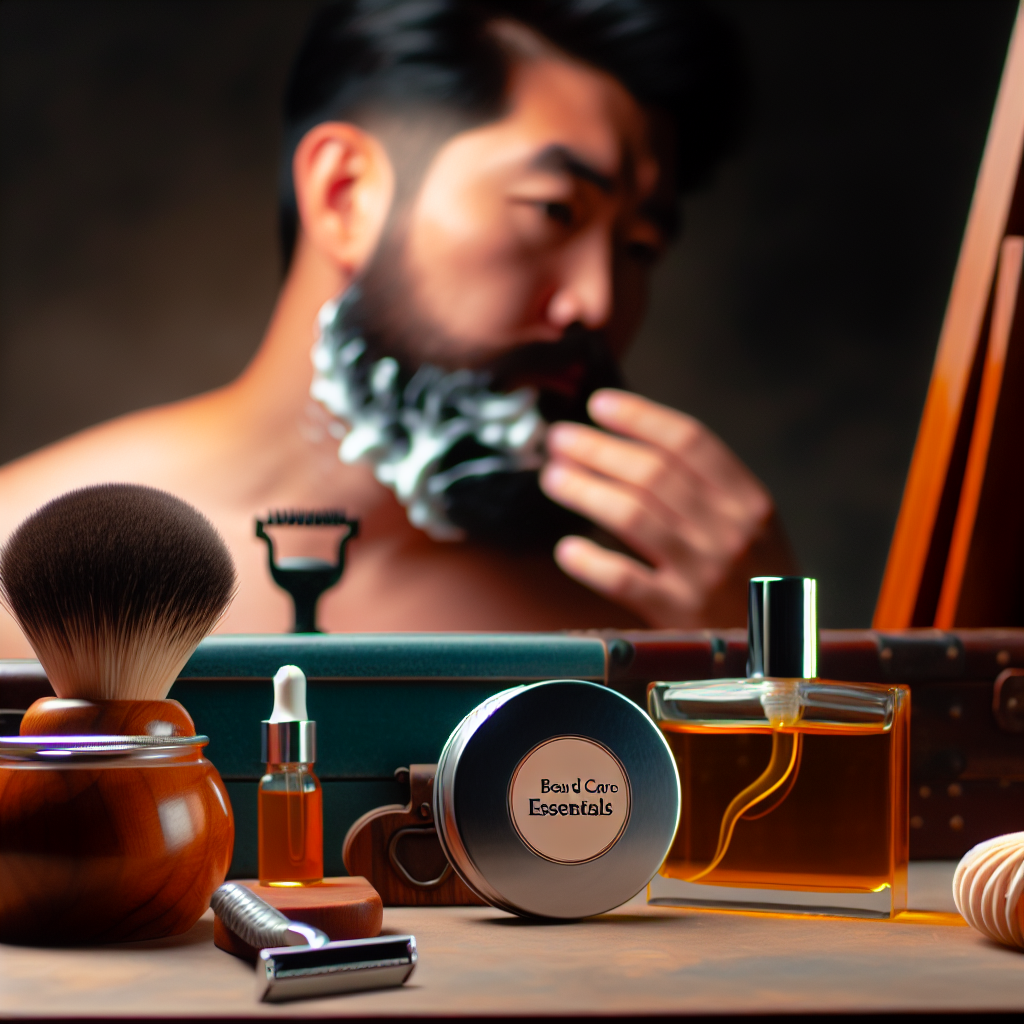Beard Care Essentials – Grooming and Skin Health
Introduction
From rugged stubble to full-grown beards, facial hair has long symbolized masculinity and personal expression. Due to cultural shifts, modern fashion trends, and increased awareness of men’s self-care and hygiene, beard grooming has become essential for men of all ages. A well-maintained beard enhances one’s appearance, boosts confidence, and supports overall skin health.
For teens encountering their first strands of facial hair, middle-aged professionals maintaining a neat appearance, or seniors managing mature, silver beards, understanding both basic and advanced beard care routines is crucial. Proper grooming not only improves how a beard looks but also helps prevent common skin issues such as acne, dryness, beard dandruff (beardruff), and potential infections.
Unfortunately, many men overlook that grooming a beard is not just about the hair—it’s also about keeping the skin underneath healthy. Poor hygiene, harsh grooming tools, and unsuitable products can cause irritation or accelerate premature skin aging. Additionally, factors such as hormones, diet, environment, and lifestyle play a big role in beard health and growth.
This guide covers the fundamentals of maintaining a healthy beard and the skin beneath. From selecting the right beard washes and oils to understanding the science behind hormonal hair growth and skin care, you’ll find helpful, scientifically backed advice to maintain a beard that looks great and feels even better—no matter your age.
Medical and Professional Guidance: Scientific Support for Beard and Skin Care
Scientific research increasingly proves the benefits of consistent and informed beard grooming. A 2020 study from the Journal of Cosmetic Dermatology revealed that poor hygiene and grooming habits led to a greater risk of conditions like folliculitis, characterized by inflamed hair follicles, and general skin irritation. Using antibacterial cleansers and maintaining clean grooming tools significantly reduced these issues.
Similarly, a 2017 study in the British Journal of Dermatology examined the connection between mundane daily practices like beard washing and the management of seborrheic dermatitis, better known as beard dandruff. Daily cleansing with a mild, pH-balanced beard shampoo and follow-up moisturizing reduced redness, itchiness, and scaling—making everyday care essential.
A 2019 article in the International Journal of Trichology linked male hormones (such as testosterone and DHT) to facial hair growth, noting that hormone overload or increased sebum production can block skin pores and lead to acne or inflamed follicles. The research strongly recommends regular cleaning, proper exfoliation, and balancing natural oil levels to maintain clear, healthy skin and strong hair follicles.
Dermatologists from the American Academy of Dermatology (AAD) emphasize tailoring beard care to age and skin type. Younger men, particularly teenagers, should avoid thick, oily products that may clog pores and worsen acne. In contrast, older men benefit from using products rich in antioxidants and hyaluronic acid to help hydrate aging skin and maintain elasticity.
A 2022 review in Skin Appendage Disorders assessed the clinical effectiveness of essential oils like tea tree, jojoba, and argan oil in beard products. These oils showed antimicrobial and anti-inflammatory benefits, especially for acne-prone skin. However, the review stressed the importance of diluting these oils correctly to prevent allergic reactions or skin damage.
Beyond physical health, beard grooming can affect psychological wellness. A 2021 clinical guide published by the American Board of Family Medicine found that individuals who regularly maintained their beards reported improved self-esteem, lower anxiety about appearance, and greater social confidence.
These findings confirm that beard care, when done properly, supports holistic well-being—from clean, hydrated skin to elevated self-image.
Tips for Every Stage of the Beard Journey
Whether you’ve just started growing a beard or have decades of grooming behind you, a few universal practices can help maintain beard and skin health:
1. Cleanse Regularly but Gently
Use a sulfate-free, moisturizing beard shampoo 2–3 times a week to clean without stripping natural oils. Daily rinsing with warm (not hot) water and occasionally exfoliating can help prevent clogged pores and ingrown hairs.
2. Moisturize with Beard Oils and Balms
Beard oils containing ingredients like jojoba oil, argan oil, and vitamin E hydrate both beard hair and the skin beneath. Beard balms also add structure and can help shape and soften coarse hair.
3. Trim and Shape Regularly
Clean, sharp tools reduce tugging and split ends. Trim unwanted stray hairs around the cheeks and neckline, and shape according to face structure to enhance aesthetics.
4. Eat for Your Beard
A nourishing diet supports hair growth. Protein, Biotin (Vitamin B7), Omega-3 fatty acids, and Zinc boost follicle health from the inside out. Avoid excess sugars and processed foods that may contribute to inflammation or poor hair quality.
5. Pay Attention to Irritation and Redness
Don’t ignore signs of skin distress like itchiness, excessive shedding, or flakiness. These could indicate underlying issues like eczema, dermatitis, or fungal infection. Address early with moisturizing products, and consult a dermatologist if symptoms persist.
Conclusion
A consistent, well-executed beard care routine offers more than style—it’s a gateway to improved skin health, enhanced self-confidence, and even mental well-being. Regardless of your age or beard type, the essentials remain the same: wash, moisturize, trim, and maintain skin hygiene under the beard.
You don’t need fancy tools or dozens of products to see results—what matters most is finding what works best for your individual skin and hair type. Choose non-comedogenic formulas, read product labels, and if in doubt, consult a dermatologist to tailor your approach. Clean tools, smart habits, and informed choices go a long way.
Be proud of your beard—it’s a beautiful expression of your personality, maturity, and commitment to self-care.
Concise Summary
Proper beard care is essential for both appearance and skin health at any age. This guide covers daily grooming routines, from cleansing and moisturizing to selecting skin-appropriate products. Scientific studies support regular washing, using non-comedogenic oils, and avoiding poor hygiene to prevent conditions like beard dandruff and folliculitis. Dermatologists recommend tailoring care by age and skin sensitivity, while research confirms psychological benefits such as enhanced self-esteem through consistent grooming. Whether young or mature, informed beard maintenance contributes to confidence, hygiene, and long-term skin health—making it a cornerstone of modern men’s wellness.
References
– Journal of Cosmetic Dermatology. (2020). “Beard hygiene and its impact on folliculitis and dermal health.”
– British Journal of Dermatology. (2017). “Management of seborrheic dermatitis in bearded men.”
– International Journal of Trichology. (2019). “The effects of androgen levels and sebum production on beard health.”
– American Academy of Dermatology. (2022). “Beard care tips for healthy skin.”
– Skin Appendage Disorders. (2022). “Clinical benefits and risks of essential oils in beard grooming products.”
– American Board of Family Medicine. (2021). “Grooming habits and self-perception among adult males.”

Dominic E. is a passionate filmmaker navigating the exciting intersection of art and science. By day, he delves into the complexities of the human body as a full-time medical writer, meticulously translating intricate medical concepts into accessible and engaging narratives. By night, he explores the boundless realm of cinematic storytelling, crafting narratives that evoke emotion and challenge perspectives. Film Student and Full-time Medical Writer for ContentVendor.com



